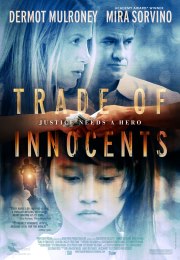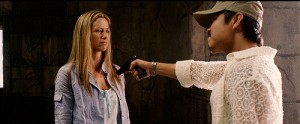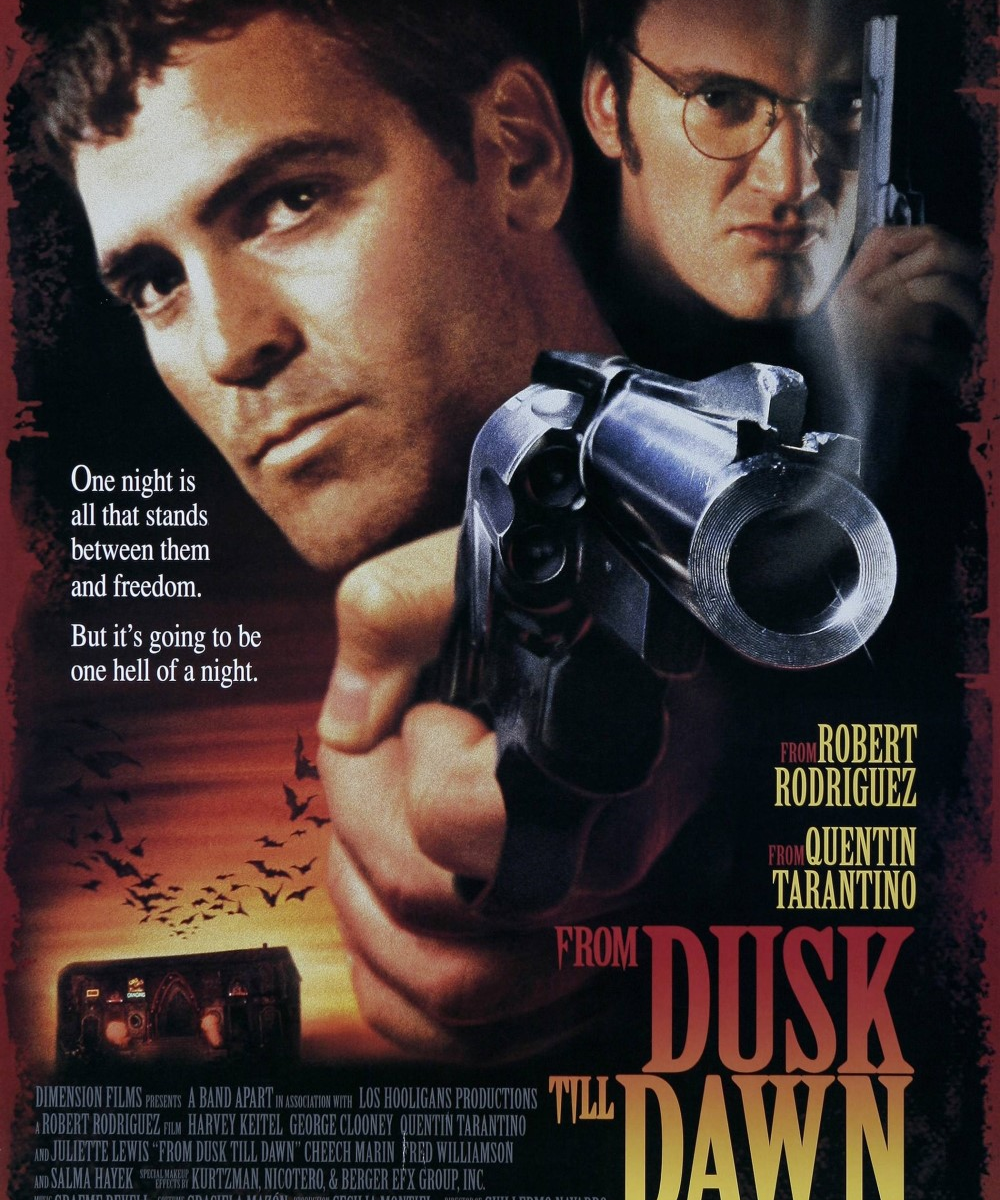 Mira Sorvino is well known for her Academy Award winning performance in “Mighty Aphrodite”, as well as her role as Romy White in “Romy and Michele’s High School Reunion”. In her new film “Trade of Innocents”, it takes a more serious look into the epidemic of human trafficking. She co-stars in the film with Dermot Mulroney and John Billinsgley. She is also working again with Dermot Mulroney next year for “Space Warriors”. Mira really took out some time to chat about her role and her stand on the topic in the film and what people can do in order to get involved.
Mira Sorvino is well known for her Academy Award winning performance in “Mighty Aphrodite”, as well as her role as Romy White in “Romy and Michele’s High School Reunion”. In her new film “Trade of Innocents”, it takes a more serious look into the epidemic of human trafficking. She co-stars in the film with Dermot Mulroney and John Billinsgley. She is also working again with Dermot Mulroney next year for “Space Warriors”. Mira really took out some time to chat about her role and her stand on the topic in the film and what people can do in order to get involved.
Mike Gencarelli: “Trade of Innocents” is such an intense film; especially your role. How did you prepare for Claire Becker?
Mira Sorvino: I have met many survivors of human trafficking through my volunteer work. I am UNODC Goodwill Ambassador to combat human trafficking. So I meet victims all the time, so I took those experiences since I am always deeply moved. You get confronted it with the horror of what people are put through from others for the love of a buck and just realize the first time I you were exposed to that. The character  really understands human trafficking, or slavery as Obama rightly put recently, for the first time. There is nothing like meeting a survivor of human trafficking and hearing their stories. There is just nothing like it. You are moved by their incredible strength and ability to not only come back to live and thrive but to help others. They are very optimistic people. So there is that. Then there is the fact that I am also a mother myself. In the story, our characters are bereaved parents and that were not a stretch to imagine but obviously I would never want to go there. I love my own children so much.
really understands human trafficking, or slavery as Obama rightly put recently, for the first time. There is nothing like meeting a survivor of human trafficking and hearing their stories. There is just nothing like it. You are moved by their incredible strength and ability to not only come back to live and thrive but to help others. They are very optimistic people. So there is that. Then there is the fact that I am also a mother myself. In the story, our characters are bereaved parents and that were not a stretch to imagine but obviously I would never want to go there. I love my own children so much.
MG: How did this role come about for you? Was it due to your work against human trafficking?
MS: I was offered the role. I am not sure if they were aware how involved I was with this. I remember having a conversation with the director, Christopher Bessette, and he told me about modern day slavery and I told him what I do. Then I think we realized that we had far more in common than we thought and then worked together to make the story even deeper. What I loved about the film is that it highlights a solution both on the law enforcement side, with the International Justice Mission and then there are volunteer facilities. These are such an important part about fighting slavery, since you can’t just arrest people.
MG: Do you feel that film will create awareness against this?
 MS: That is our hope. We are showing it to a lot of political people. It is really helping to drive to the message and outreach at child sexual exploitation. The sad this is that it is such a huge problem in our own country. The film is about a foreign situation but honestly we have a big, if not, bigger issue of child trafficking here in the US as in anywhere else. John Billingsley plays a pedophile in the film and goes to Cambodia to by children. If he is caught there, our US Federal laws will get him and he might get 25 years and put on permanent sex offender registry. If someone like him is caught in America, in most cases he will be let go at the scene and not even brought into the police station. The child will be brought in and charged with the crime of prostitution. That is really true. Nothing will happen to the “John” in the US as long as he has paid for it. If your neighborhood pedophile has sex with a kid in his basement and doesn’t pay he is going to get the full ride of punishment. That is the outrage in our country.
MS: That is our hope. We are showing it to a lot of political people. It is really helping to drive to the message and outreach at child sexual exploitation. The sad this is that it is such a huge problem in our own country. The film is about a foreign situation but honestly we have a big, if not, bigger issue of child trafficking here in the US as in anywhere else. John Billingsley plays a pedophile in the film and goes to Cambodia to by children. If he is caught there, our US Federal laws will get him and he might get 25 years and put on permanent sex offender registry. If someone like him is caught in America, in most cases he will be let go at the scene and not even brought into the police station. The child will be brought in and charged with the crime of prostitution. That is really true. Nothing will happen to the “John” in the US as long as he has paid for it. If your neighborhood pedophile has sex with a kid in his basement and doesn’t pay he is going to get the full ride of punishment. That is the outrage in our country.
MG: Let’s talks about John’s role in the film, it was very well done and extremely disturbing.
MS: It was incredibly disturbing. He played it in a very self-justified way. That is what great actors have to do; they have to justify the behavior of the character. He wasn’t apologetic for it in any means.
MG: Tell us filming on location in Bangkok, Thailand?
MS: That was an eye-opener for us as well. While I was there I worked with the local UNODC office for Southeast Asia. They gave me a true education on the situation there in terms of human trafficking. I also worked with some local NGA’s one of which was called Nightlight. One of the women there took me into the Bangkok red light district late at night. She goes on this nightly walk-about with her volunteer staff. They try and find under-age girls working in the sex bars. It was very crazy and not something that an ordinary American female will ever experience. It is not something you would see. It is such much about of their culture there and a lot of their economy is based on sex tourism.
MG: What can people do if they want to get involved?
MS: I have three recommendations for you. First is EPAT (End Child Prostitution and Trafficking). This is global network organizations that span the entire world. You can go to  the website for your country and find out how to get involved. Then, there is a group called Polaris Project. This project is absolutely amazing. They run the National Human Trafficking Resource Center, which is a 24/7 hotline that has led to thousands identification and rescues of trafficked people in the US than law enforcement has. Also on their website, you can see how you state rates in terms of human trafficking. Some states are good but some have no responses. You can see how to put pressure on your legislators to pass these new laws. Lastly if you just have money and don’t have time you can donated to the UN Voluntary Trust Fund for Victim of Human-Trafficking, it is one of the only fund that grants money to NGO’s and people around the world to help people. That is a very big deal and even with a small amount of money. It all adds up and is very important.
the website for your country and find out how to get involved. Then, there is a group called Polaris Project. This project is absolutely amazing. They run the National Human Trafficking Resource Center, which is a 24/7 hotline that has led to thousands identification and rescues of trafficked people in the US than law enforcement has. Also on their website, you can see how you state rates in terms of human trafficking. Some states are good but some have no responses. You can see how to put pressure on your legislators to pass these new laws. Lastly if you just have money and don’t have time you can donated to the UN Voluntary Trust Fund for Victim of Human-Trafficking, it is one of the only fund that grants money to NGO’s and people around the world to help people. That is a very big deal and even with a small amount of money. It all adds up and is very important.

